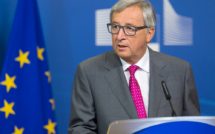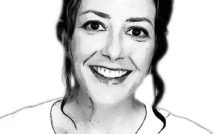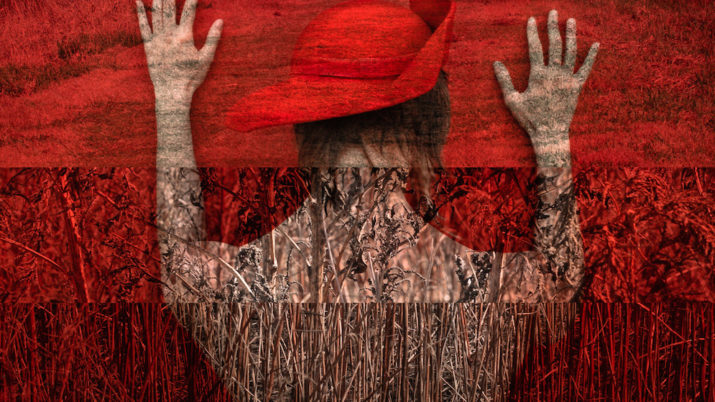
This is part of our special feature, Diversity, Security, Mobility: Challenges for Eastern Europe.
This series features three Bulgarian-born artists who experienced the Iron Curtain and the fall of the Berlin Wall as principal dancer, as photographer, and as multi-media artist. All three were heavily influenced by the cultural shift from communism to capitalism upon their emigration to the United States. In this curated show, motion and movement connect the works: the wilting of beauty and death followed by renewed growth and life; the idea of boundaries overcome by movement as a liberating force both physically and psychologically; and money as a symbol for granting mobility and artistic growth to foster transatlantic communication and visibility for the cultural wealth of smaller central and eastern European regions which we are spotlighting in this special holiday edition.
–Nicole Shea for EuropeNow
Rafaelo Kazakov
As an adolescent who had just picked up a camera, I had a very immodest ambition: to photograph a forest and make the image look pornographic. On the other hand, I also wanted to take a picture of a sex act and communicate the serenity of a landscape. Only half-knowing it at the time, I was longing to escape the tyranny of subject matter. Taken to its end, this ambition can lead a photographer to madness or to pure abstraction. Not surprisingly, 20 years later, most of my photographs stay on the edge of abstraction. In the time passed I have learned that one pursues mad, impossible dreams without thinking about them. The sharpshooter taking aim at an invisible target is well-advised to keep his eyes firmly closed.
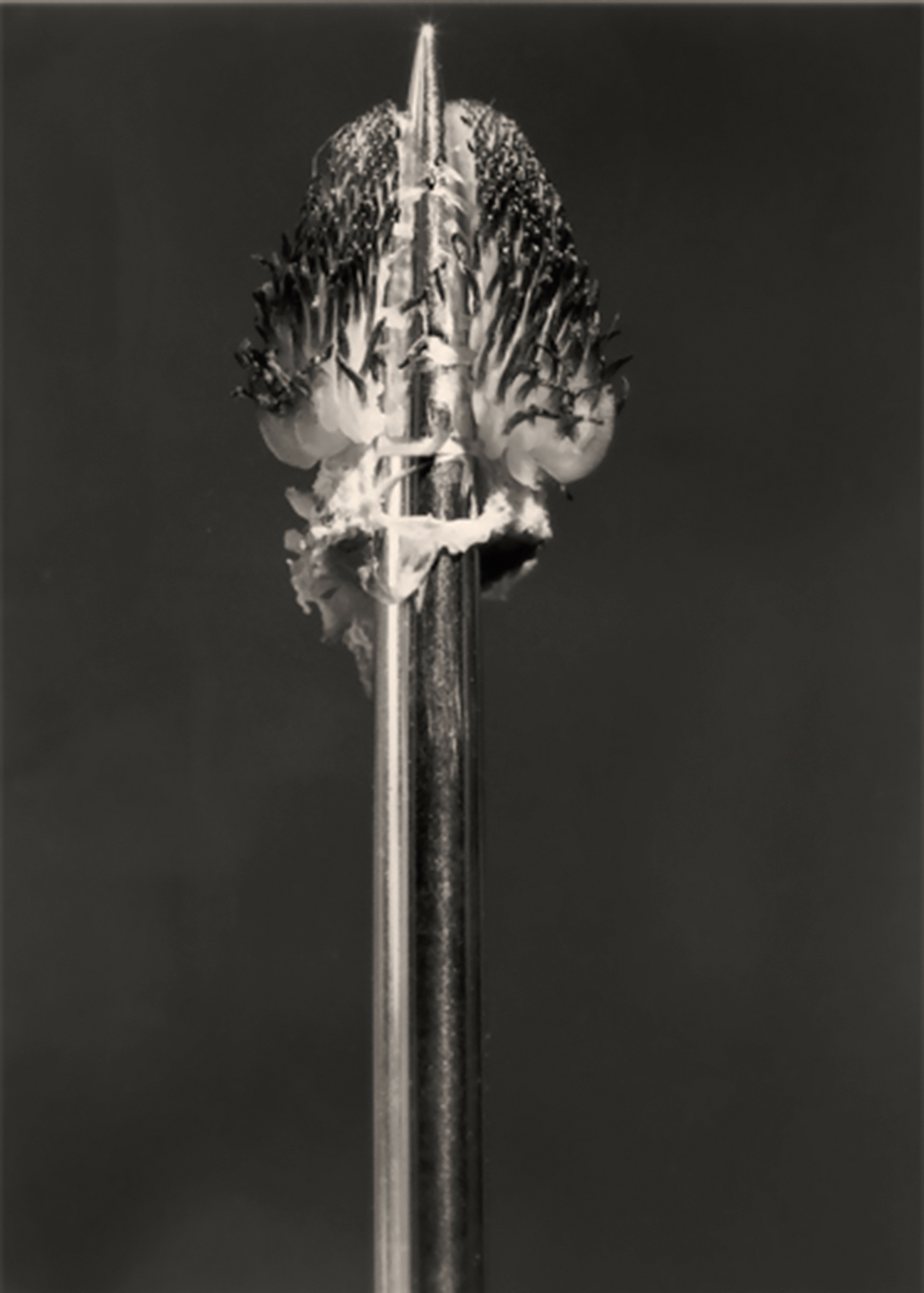
“Wilt,” A series of 14 toned gelatin silver prints, 16×23 inches, edition of 25, 2007
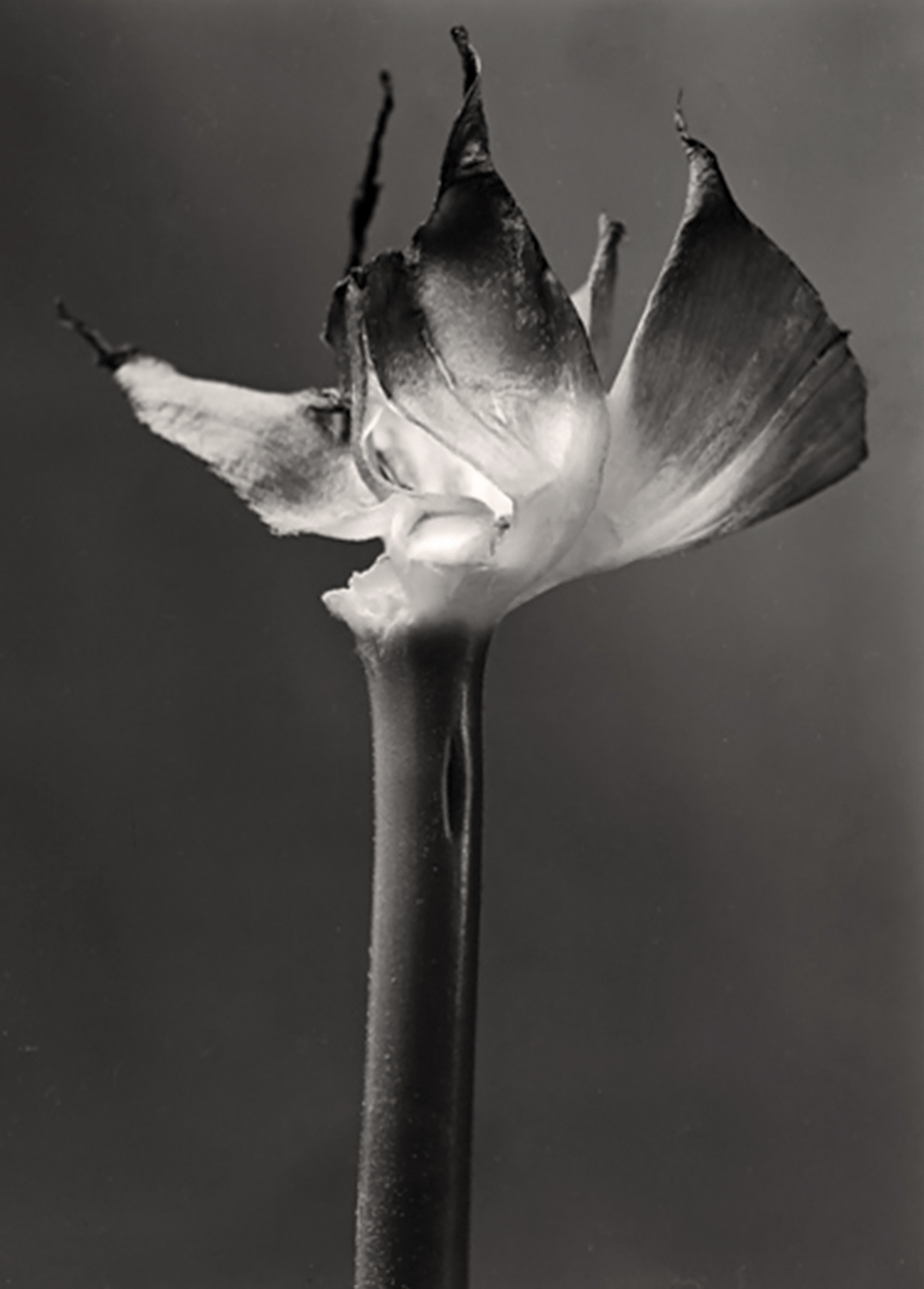
“Wilt,” A series of 14 toned gelatin silver prints, 16×23 inches, edition of 25, 2007
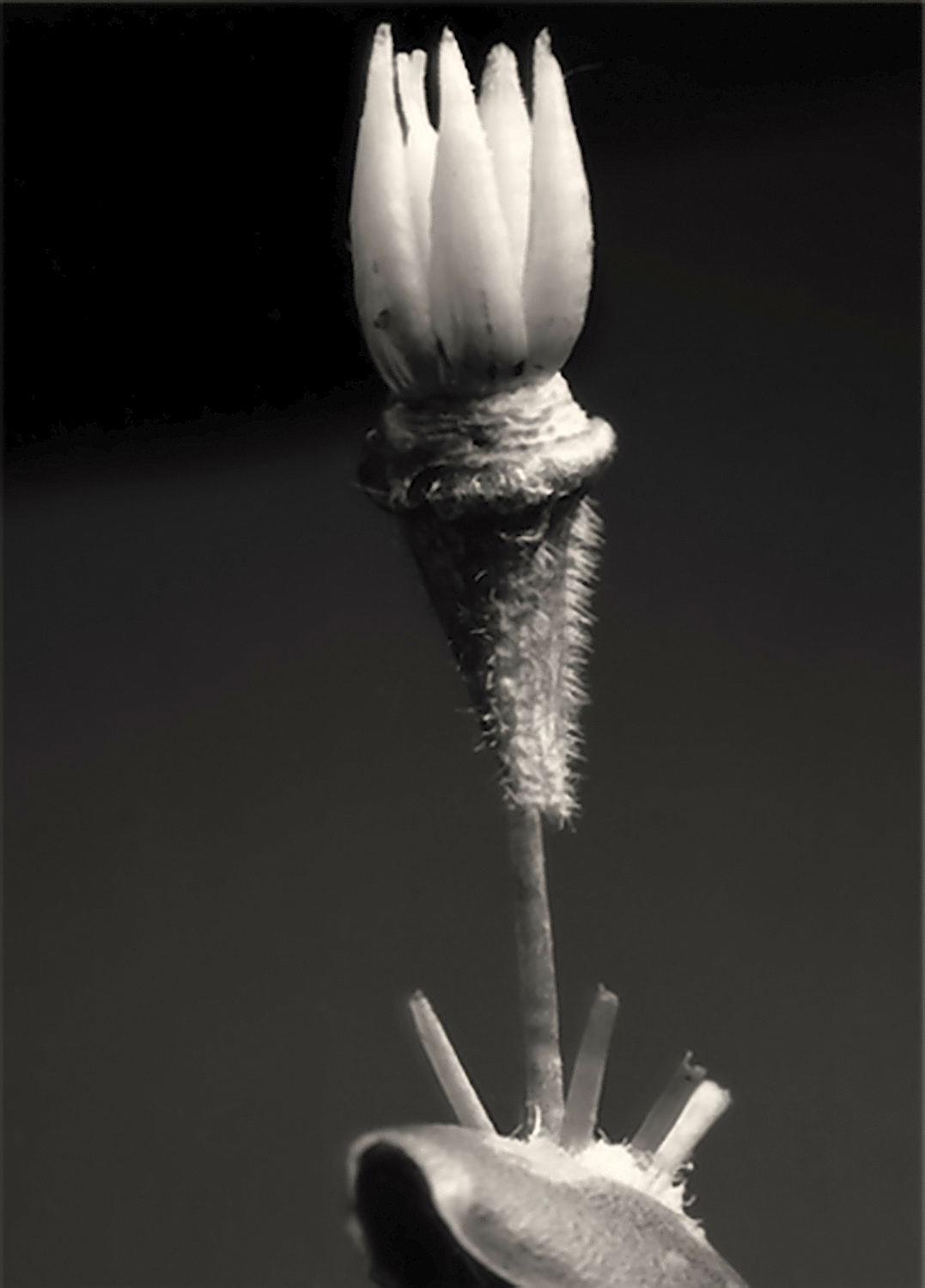
“Wilt,” A series of 14 toned gelatin silver prints, 16×23 inches, edition of 25, 2007
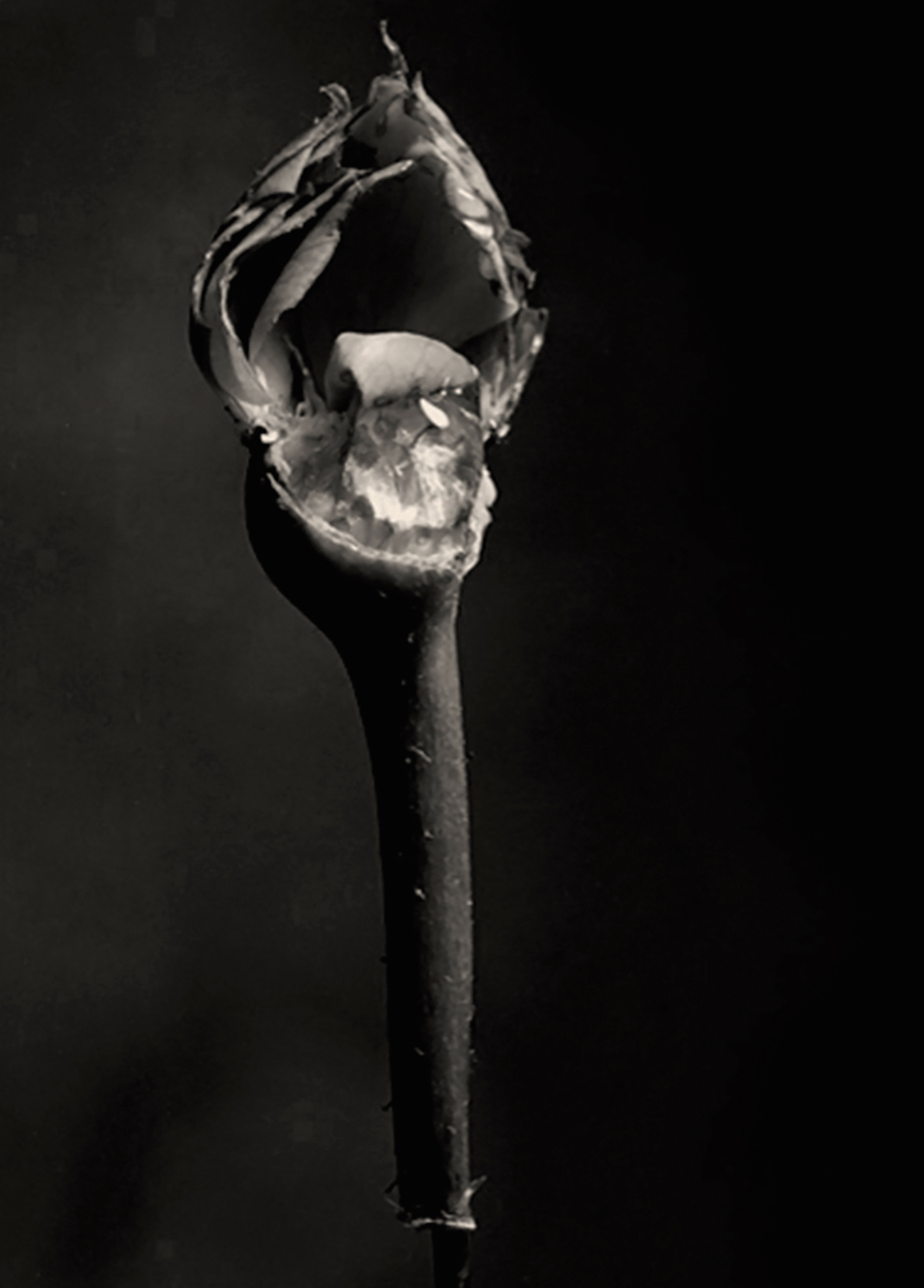
“Wilt,” A series of 14 toned gelatin silver prints, 16×23 inches, edition of 25, 2007
Bulgarian-born photographer, Rafaelo Kazakov was already a well-known and widely published photographer when he emigrated to the United States after the fall of the Wall in 1990. During his early career, he had developed the technique of employing his camera in the reportorial, socially engaged tradition of Robert Frank and Henri Cartier-Bresson who have been heavily influencing his work to this day. Currently, Kazakov produces large-scale portraits of thousands of Bulgarians as part of a traveling exhibit series that will be shared with national and international audiences. He received his degree from the School of Visual Arts in NYC.
Ani Collier
The first half of my life, I was always performing in front of an audience or a camera. Although I retired my pointe shoes more than fifteen years ago, the pull from the ballet world was too strong for me to walk away completely. The stories, the shapes, the lights, the dancers, the choreography, and the compositions were all too ingrained in my mind. Slowly, but surely, I picked up where I had left off; however, this time behind the lens of a camera.
There are a few themes that have emerged in my work. One is my fascination with cities; having grown up under Communism in Bulgaria, I never imagined that I would see the Berlin Wall fall or that I would be able to travel freely to the West. Other themes in my work include my love of movement, architecture, and beauty. It is evidenced in the way that I capture my subjects and how I manipulate a composition’s lines and shapes.
Although a photograph only records a single moment in time, the collages that I make tell stories. I feel that through digital photography and manipulation, I am able to choreograph again – albeit virtually. In a way, I am still dancing; only now, I dance with my images.
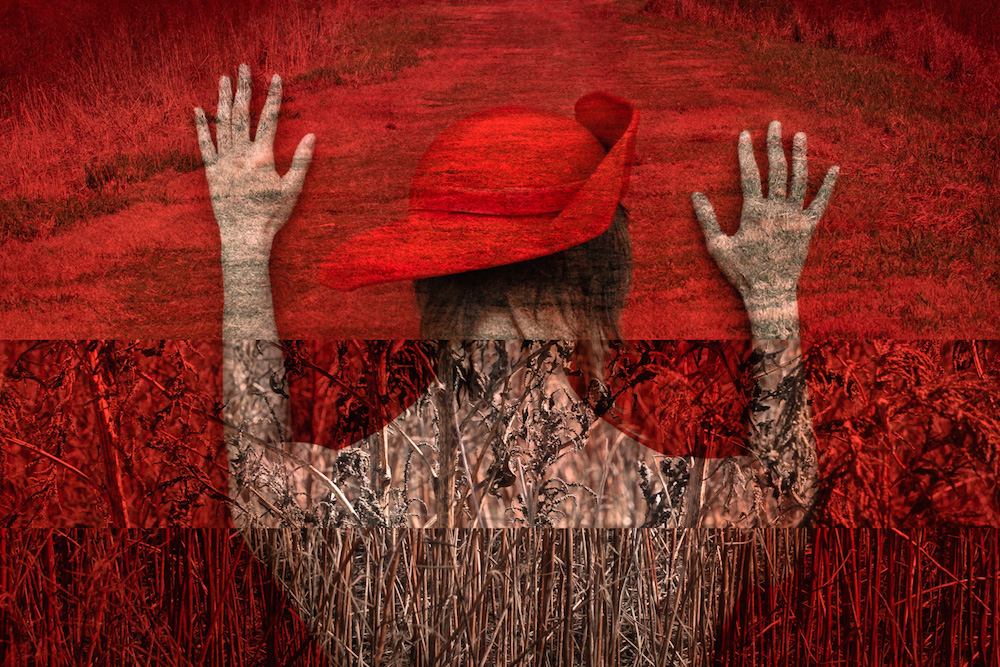
Deni at La Chua Trail, 2011
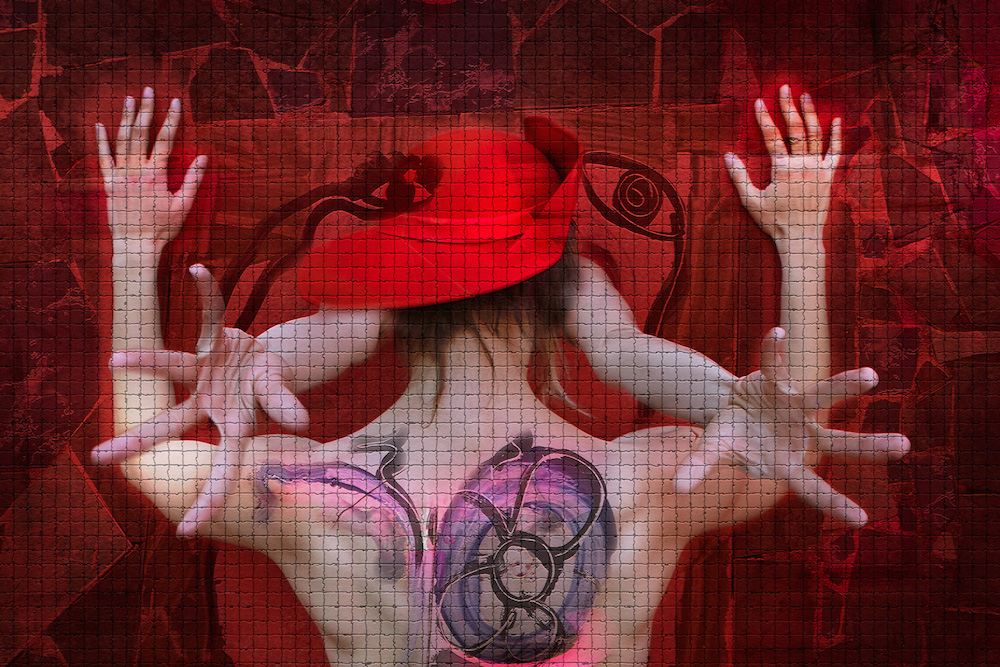
Deni at The Red House, 2012
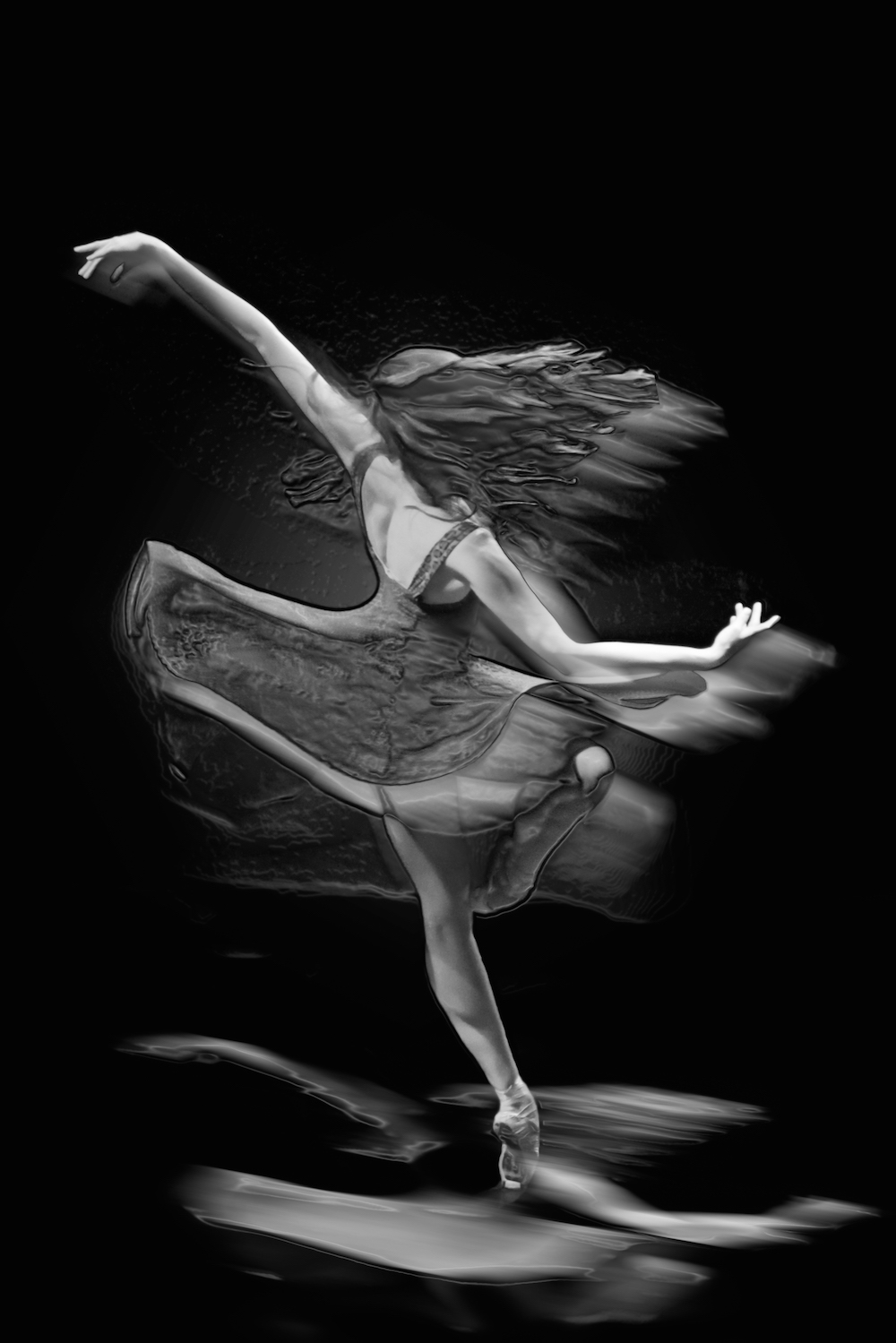
Beth Ann, In Motion, 2011
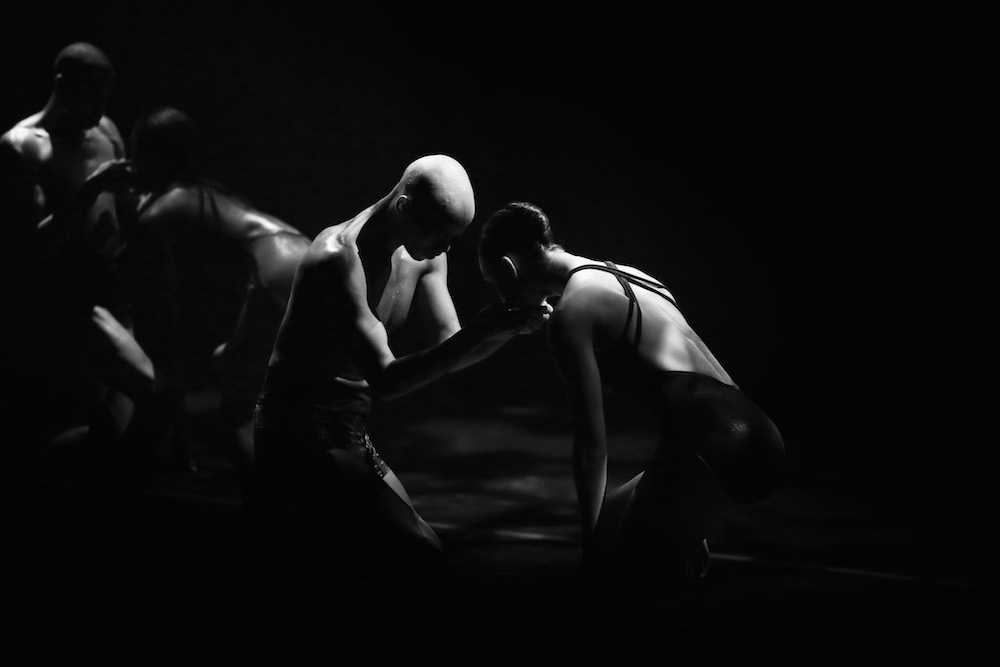
“The Groove,” Complexions, 2014
Ani Collier is a dancer, choreographer, and visual artist. She was born in Bulgaria and trained at the State Ballet School in Sofia behind the Iron Curtain before moving to the USA after the fall of the Berlin Wall in 1990. Ani’s dance career included principal roles in ballets such as The Nutcracker, Apollo, Rite of Spring and others. In the Annex, Margarita, Of Air and the Water and Shadows are among the dance theater performances that she has choreographed and directed.
Ani has toured nationally and internationally and has produced dance performances with the Bulgarian National Ballet. She has worked to facilitate the introduction of Balanchine and other American choreographers to Bulgarian audiences and has supported international workshops both in the USA and in Bulgaria.
Houben Tcherkelov
For more than ten years, my work has focused on using images that come from banknotes and other financial documents such as stock certificates, bonds, and even checks. I believe that the US is living through the Second Gilded Age that, unlike the first, is characterized not by mass industrialization but rather by the rise and increasing sophistication of the financial sector. Thus, unlike traditional pop art of the 20th century, my focus is not on manufactured goods but on the financial instruments that are the engines of wealth in the 21st century. The currencies I work with typically reflect moments of local economic or political transition in the countries of their circulation.
In my most recent paintings, I have focused primarily on using foil and acrylic to recreate images from banknotes. This technique allows me to transfer existing images from money without drastic distortion while maintaining a connection with the pop art legacy. Often the images I paint include traces that reflect digital glitches upon digital transfers, emphasizing the relationship between the transfer of the image on to canvas and the transfer of financial information in a global economy. The works I create materialize the transients of currency in global economy characterized by cashless transactions.
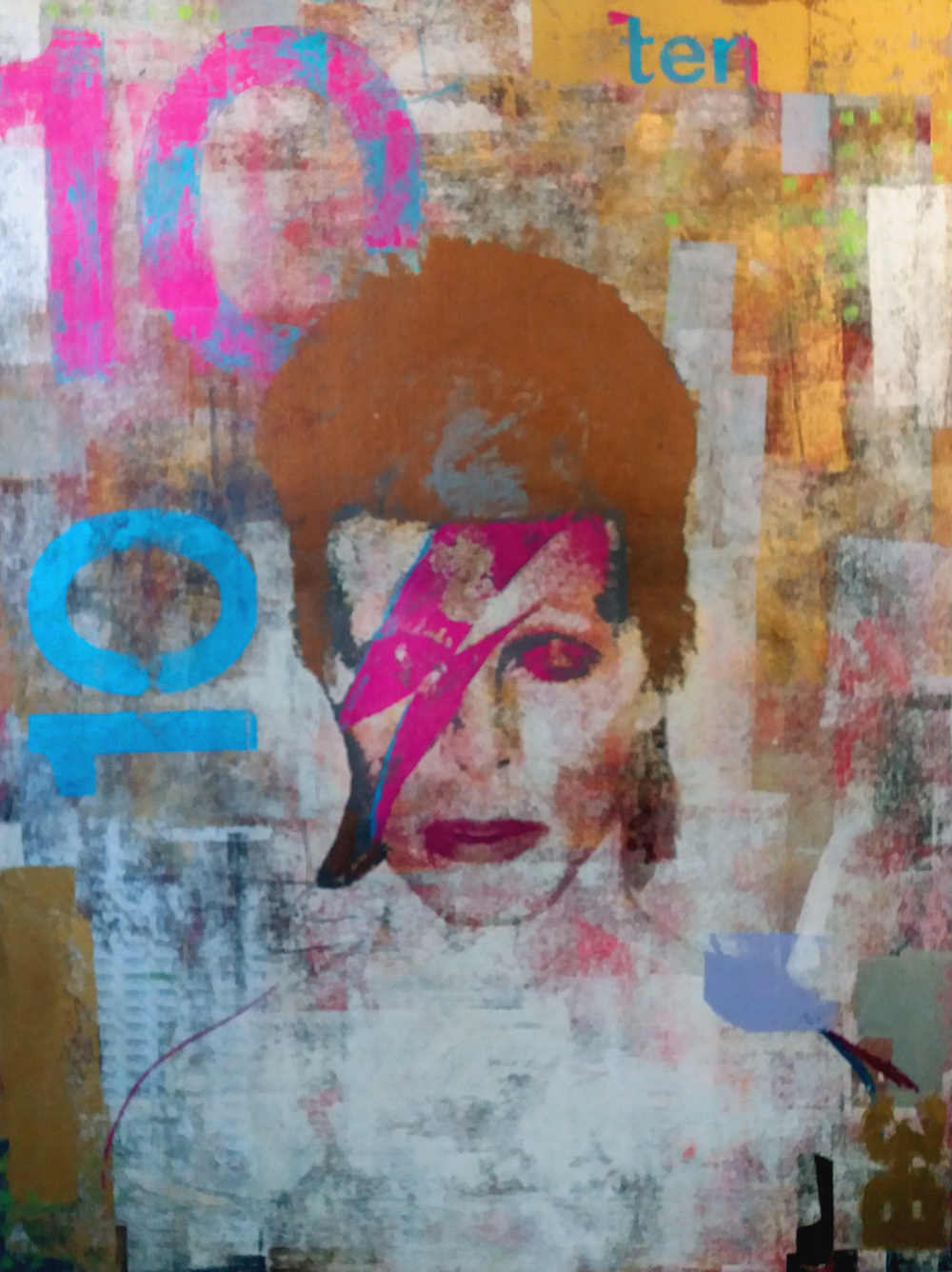
David Bowie, acrylic and foil on canvas, 40×30, 2015
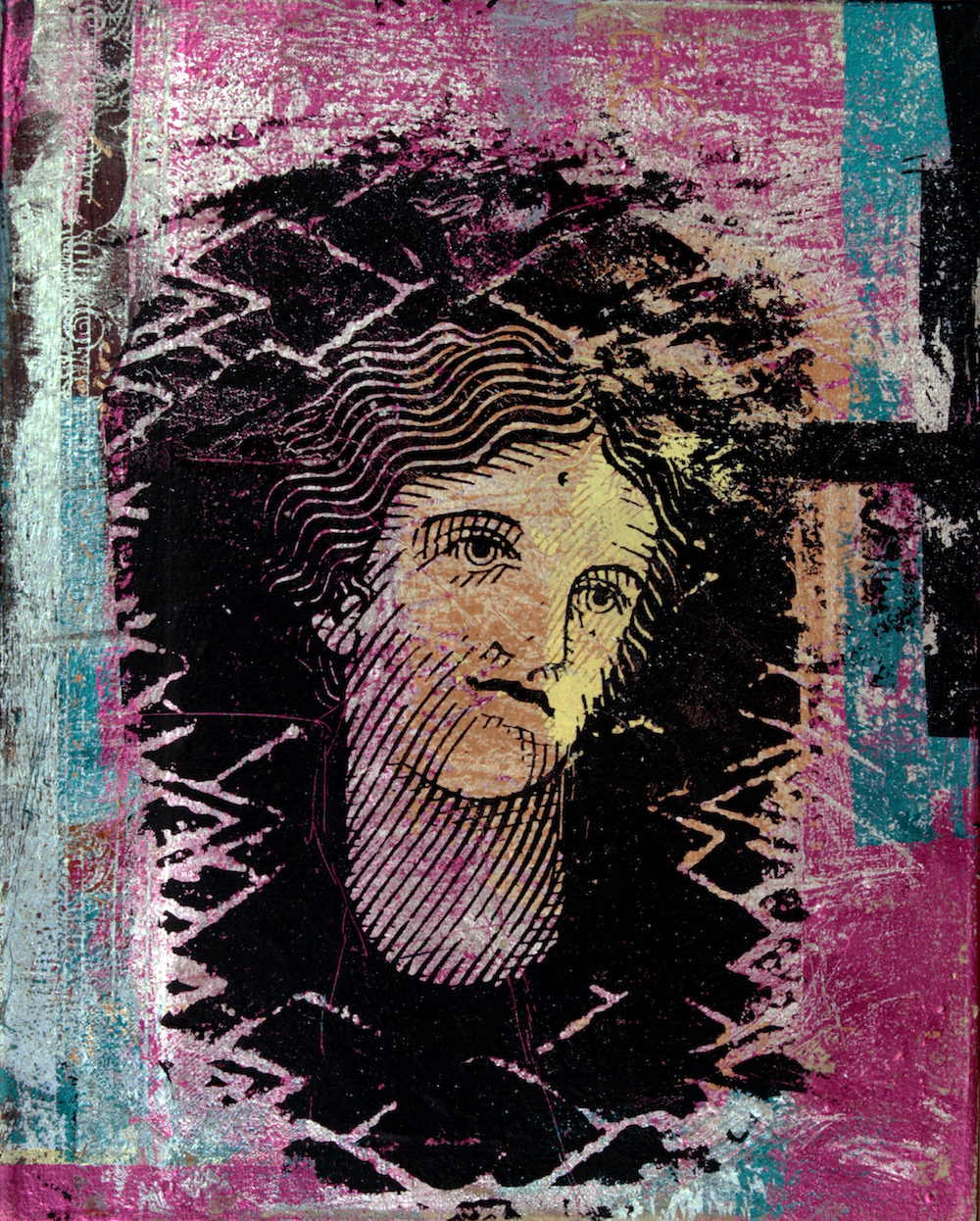
10 Euro, acrylic and foil on canvas, 16×20, 2015
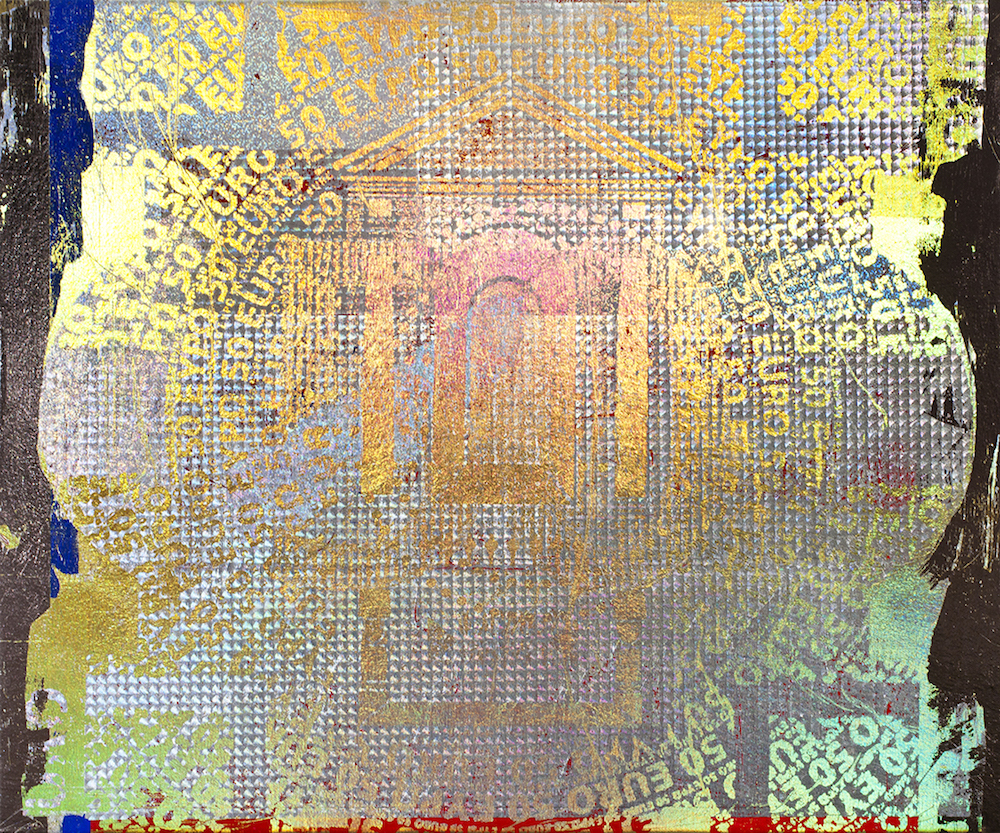
50 Euro, acrylic and foil on canvas, 20×24, 2012
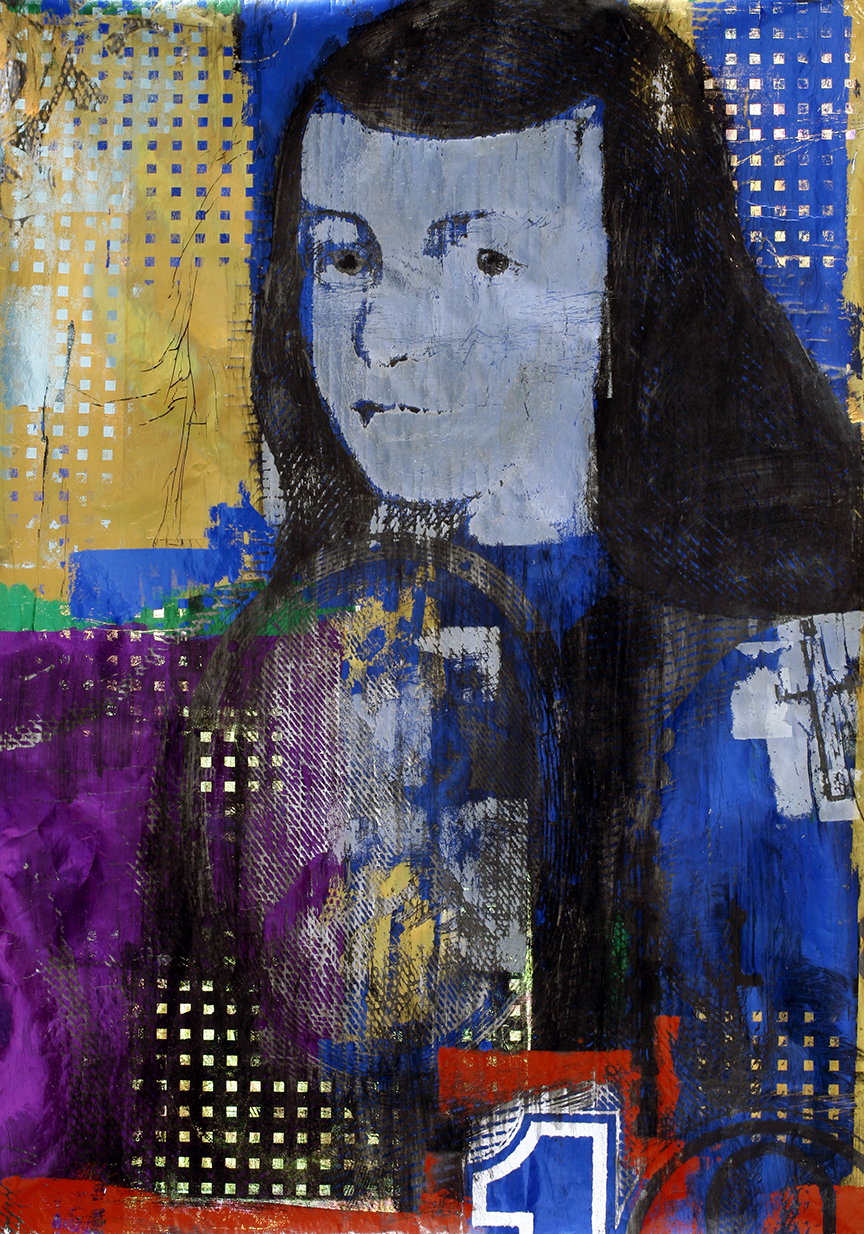
1000 Pesos, acrylic and foil on canvas, 52×34, 2013
Houben Tcherkelov, known as Houben R.T., is a Bulgarian born avant-garde artist, who explores the symbolic links between government produced images and national power and identity. Houben received his degree in painting at the Conservative Art Academy in Sofia and was associated with the Radical art movement around XXL Gallery. In his early work, he explored post-communist Bulgarian life through photography, film, and installations. Although his work was critically acclaimed, he abandoned this technique in favor of painting upon moving to New York City in 2000.
Inspired by his native Soviet Regime’s and the United States’ use of imagery to foster a national identity, he creates paintings using images derived from various currencies. Houben’s rich, colorful style is evocative of postimpressionism and abstract expressionism; however, he tailors his painting style according to the image he is conveying, merging content and style in a unique and innovative way. He grinds his own pigments to achieve the intensity of color in his paintings and oftentimes uses the impasto technique to emphasize the materiality and volume of his forms. When describing his art, he states, “My work creates an environment of visual stimulation, an explosion for the senses where viewer can lose him or herself.”
Houben’s unique style and subject matter has earned him numerous nation-wide exhibits, including shows at the Bronx Museum, NY, the Museum of Biblical Art, NY, the Brogan Museum in Florida, and the NYMEX Art Gallery at the World Financial Center, to name a few.
Nicole Shea ran CenterArts Gallery in Newburgh from 2009-2012 and later incorporated her arts experience into the leadership training at West Point. In 2015, she founded a large-scale sculpture walk outside the gates of West Point, which she has been curating together with the founding members of Collaborative Concepts in a community effort to revitalize the area via the arts. She is also Executive Editor of EuropeNow and Director of the Council for European Studies.
Published on December 6, 2017.

